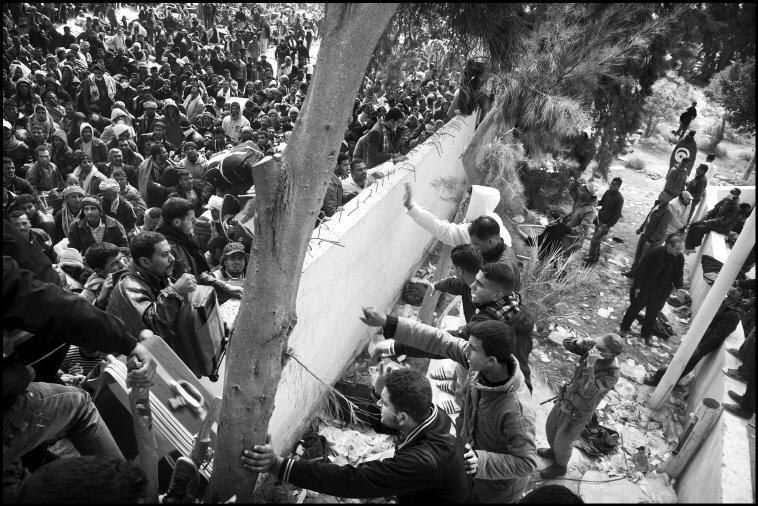Common Core Standards:
CCSS.ELA-LITERACY.RH.9-10.2: Determine the central ideas or information of a primary or secondary source; provide an accurate summary of how key events or ideas develop over the course of the text.
CCSS.ELA-LITERACY.RH.11-12.1: Cite specific textual evidence to support analysis of primary and secondary sources, connecting insights gained from specific details to an understanding of the text as a whole.
CCSS.ELA-LITERACY.RH.11-12.2: Determine the central ideas or information of a primary or secondary source; provide an accurate summary that makes clear the relationships among the key details and ideas.
CCSS.ELA-LITERACY.RH.9-10.4: Determine the meaning of words and phrases as they are used in a text, including vocabulary describing political, social, or economic aspects of history/social science.
CCSS.ELA-LITERACY.RH.9-10.7: Integrate quantitative or technical analysis (e.g., charts, research data) with qualitative analysis in print or digital text.
Fractured Lands 30 Ft Timeline: Assessing Causes & Effects of the “Fractured” Middle East
Directions: Read the instructions in their entirety before you begin.
Day 1:
1. In a small group, brainstorm a list of the following based on the critical reading of “Fractured Lands”:
- Factors that lead to the “fractured” Arab World
- Important events that illustrate this catastrophe
- Effects of the “fractured” Arab World
2. Assess the list that your group created. Discuss the following questions with your group members:
- Which factors are more significant? Why?
- Which factors are less significant? Why?
- Which characteristics are more significant? Why?
- Which characteristics are less significant? Why?
- Which effects are more significant? Why?
- Which effects are less significant? Why?
3. After group discussions, we will reconvene for a whole-class conversation to explore the possible images, symbols, photos, graphs, etc. that illustrate the factors, characteristics and effects of the above list. Finally, we will divide up the work so that some of you draw the necessary visuals. Some of you, instead, will print images, photos and graphs from reputable online sources. Finish whatever is necessary for homework.
Day 2: Timeline
Notice the 30-foot-long butcher paper in class!
1. We are creating a visual-heavy, text-light timeline that chronologically articulates the factors, characteristics and effects of the fractured Arab World catastrophe.
2. To indicate factors/characteristics/effects that were most significant, construct those visuals so that they physically take up more space than the factors/characteristics/effects that you and your classmates deem less significant. Think about yesterday’s discussion!
3. When your group’s timeline is complete, be ready to talk about how these events in the Middle East coincide with what the average American was concerned with at the same time. Was the average American paying attention to the events unfolding in the Middle East or were sports, entertainment and local politics more of a priority?
4. Following our discussion, we will add these American “events” to the bottom section of the timeline. The idea is to juxtapose the American psyche of media consumption with the catastrophic events of the Middle East. We will finish class with a dialogue exploring why this juxtaposition exists.
Materials Needed:
- New York Times Magazine “Fractured Lands” by Scott Anderson
- Internet access
- Printer
- Markers, colored pencils, etc.
- 30 foot butcher paper
Day 1:
After reading, analyzing and discussing the chapters and stories that comprise Fractured Lands, students should brainstorm a list of the following based on the critical reading of “Fractured Lands”:
- Factors that lead to the fractured Arab World
- Important events that illustrate this catastrophe
- Effects of the fractured Arab World
Next, students should assess the list in terms of more significant and less significant causes, characteristics and effects. Finally, students should think about visuals such as images, symbols, photos, graphs, etc. that represent their list. Students can draw and/or print from the Internet. Students will collaborate to divide up whatever is left to finish for homework.
Day 2:
Teacher should have 30 foot x 4 foot butcher paper in class before students enter. Students will work together to create a visual-heavy, text-light timeline that illustrates the factors, characteristics and effects of the fractured Arab World catastrophe. The most significant factors, characteristics and effects should physically take up more space than the less significant. Students should leave the bottom 1/3 of the timeline blank.
When students are finished with the timeline, teacher should walk the length of the timeline and ask students to consider what the average American was concerned with while the events on the timeline were occurring (i.e. NFL Championships, Kardashians, etc.). Students may use their smart phones to help jog their memories. Students will then add these “events” to the bottom of the timeline. The idea is to juxtapose the American psyche of media consumption with the catastrophic events of the Middle East. This should lead to a dialogue exploring why this juxtaposition exists.
